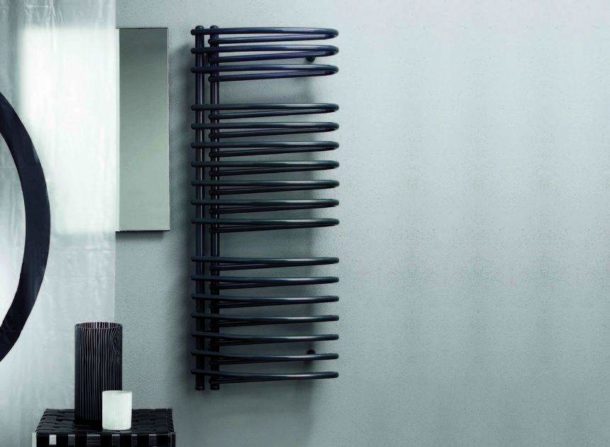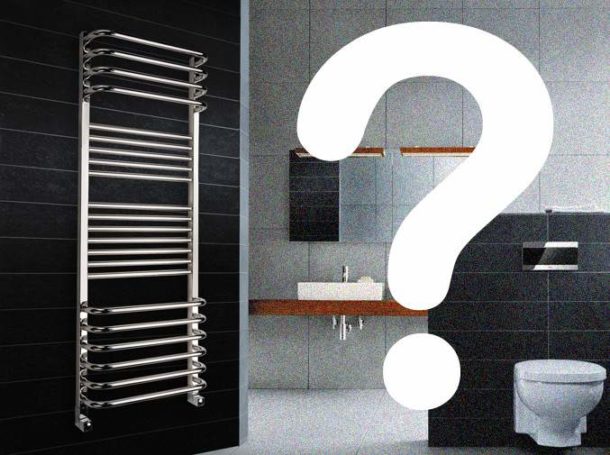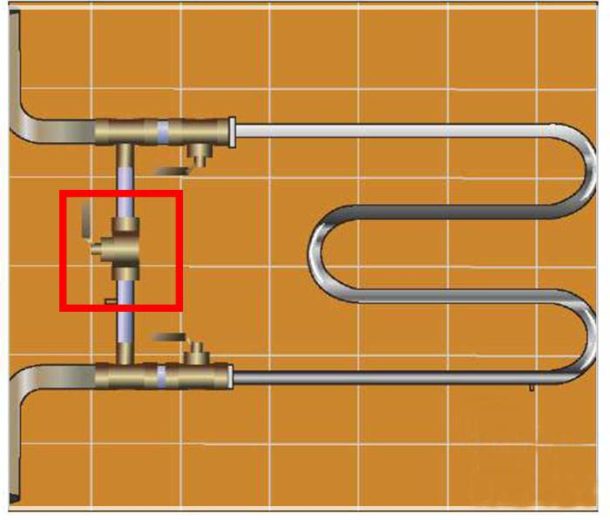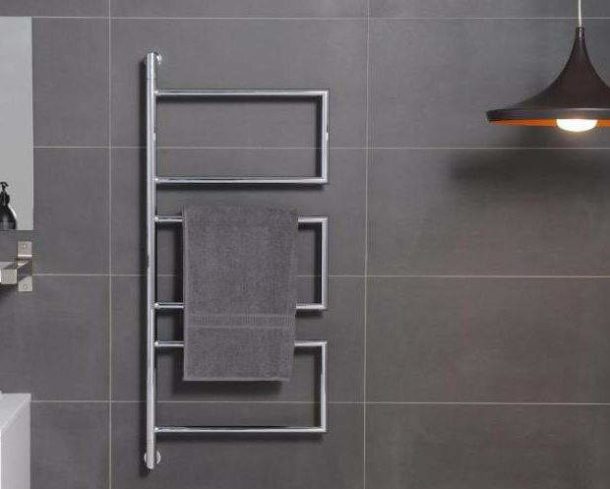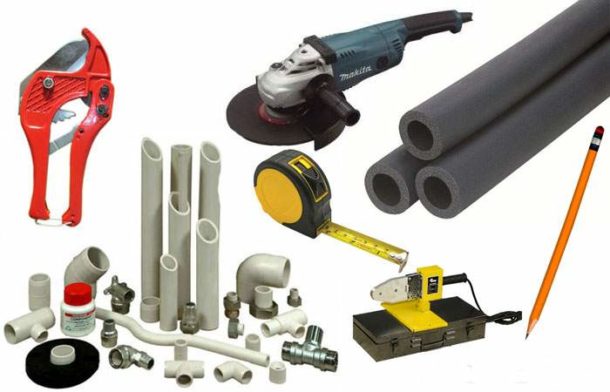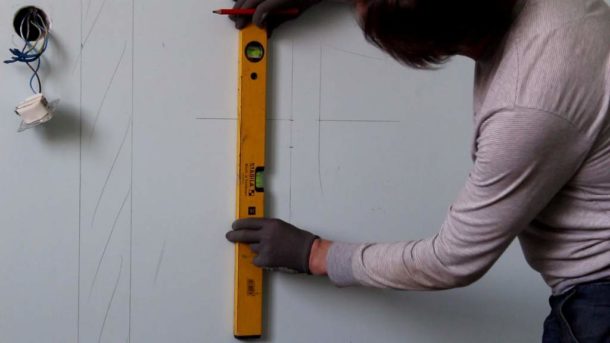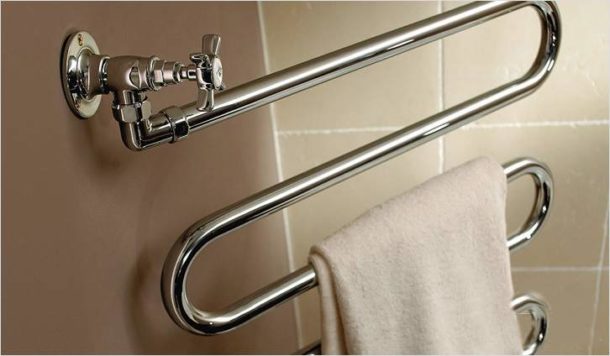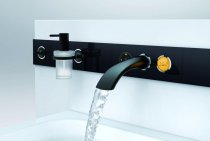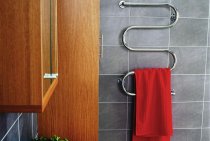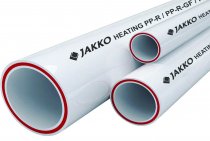When renovating a bathroom, the space is often remodeled. In this case, you have to transfer the heated towel rail to another wall. Moving an electrical appliance is the easiest to do, and with a device connected to a heating or hot water supply, problems arise that can be solved with experience and knowledge or by contacting professionals for help.
How to move an electric towel warmer?
It will be much easier to move the heated towel rail to another wall if the device runs on electricity. It is a household heating appliance, which is installed as follows:
- The location of the heated towel rail is selected at a height of at least 130 cm and a distance closer than 60 cm from grounded parts of sanitary equipment: baths, showers, pipelines.
- Concealed wiring is made and a waterproof socket is installed. You can install a switch outside. Electricity is supplied to the bathroom through a separate circuit breaker and an RCD with a leakage current of not more than 10 mA.
- The heated towel rail is dismantled, and then fixed in a new place.
- Grounding of all metal parts of the room is provided.
- Finishing work is underway.
- The device is connected to the network.
Transferring a water heated towel rail
Transferring a heated towel rail with hot water to the opposite wall is much more difficult, since you need the ability to own a welding machine or a soldering iron to install a polypropylene pipeline.
Preparation and site selection
When a heated towel rail is transferred, it is necessary to coordinate with the authorities serving the communications of the housing stock. Moving the device inside the apartment changes the characteristics of the heating system of the entire multi-storey building. Therefore, it is necessary to obtain permission from the management company. Due to installation of a new towel rail to another place will lead to a change in the hydrodynamic characteristics of the system, you should get expert advice.
Advice. When choosing a place to install the appliance, it is recommended to pay attention to the space above the washing machine. It is believed that this placement is the best option. If the machine is front loading, the lid must not touch the heated towel rail when opened.
When choosing a new place when moving a heated towel rail, you should be guided by the requirements of SNiP and common sense:
- heated towel rail in the bathroom located at a distance of at least 0.6 m from any equipment;
- if the device has a U-shape, it is placed at a height of at least 1.1 m, and an M-shaped one - at least 0.9 m;
- a vertical device in the form of a ladder is fixed in such a way that you can reach its upper part;
- the place for the heated towel rail is selected taking into account the convenient supply of communications;
- it is necessary to install shut-off valves and a bypass - a pipe jumper of the device - so that in case of unforeseen situations you can turn off the water supply through your device and at the same time not turn it off from your neighbors;
- when replacing old pipes with new ones, their diameter should be the same or larger, it is also necessary to reduce the length of the liner if possible;
- so that the new pipeline can withstand high water pressure, steel pipes are selected without seams, and polypropylene pipes with an aluminum layer;
- to prevent the appearance of air locks in the system, large level differences should be avoided, for which pipe laying is done with slight slopes;
- the design of the heated towel rail is chosen convenient for connection to the supply pipes, and the connection thread must be the same (it may differ for imported models).
Heating appliances for apartments in multi-storey housing are selected from stainless steel and without seams. Brass products are more suitable for private houses, since there is less chance of water hammer in pipelines.
Before moving the heated towel rail, it is advisable to inform the neighbors about the temporary shutdown of hot water. The overlapping of the hot water riser is made after an agreement with the management company.
Equipment and tools
To work on the transfer of the heated towel rail, you will need the following tools:
- sets of keys, including gas and adjustable;
- grinder with cutting and grinding discs;
- pipe welding machine;
- perforator;
- a set of dies for threading pipes;
- sanitary flax with paste.
From the equipment should be purchased:
- heated towel rail;
- Ball Valves;
- pipes and fittings.
All connections with hidden laying are made welded. In the presence of detachable connections, access is provided to them.
The procedure for transferring a heated towel rail
The sequence of actions for transferring the device will be as follows:
- With the help of a full-time plumber, the riser in the basement of the house is turned off.
- Cut out an old towel warmer. If necessary, a part of the supply pipeline is dismantled. The remaining branch pipes must have a length suitable for connecting a new pipeline.
- On the outlets of the supply and return pipelines, threads are cut using dies, and then ball valves are installed.
For sealing threaded connections, flax with paste is used. Fum-tape cannot be used here. It is advisable to install the device on quick couplings with a union nut (“American”).
- The supply and return lines are laid to the installation site of the device. If the distance is large, the pressure losses should be preliminarily calculated so that they do not significantly exceed the previous ones that were on the heated towel rail at this old location. The pipeline is laid along the wall or hidden in it under a decorative coating.
Important! It is forbidden to make horizontal strobes on load-bearing walls. Can this be done when there is an emergency? The only possible option is a small diagonally grooved section. Horizontally running pipes can be hidden under a baseboard or behind a false plasterboard wall.
- With the help of a level, markings are made, holes are drilled in the wall, plastic dowels are inserted, and then fasteners and the device itself are installed on the wall.
- The transferred heated towel rail is connected to the system through ball valves.
- A bypass with a tap to turn off the water is installed in parallel to the device.
- An air vent is installed in the upper part of the heated towel rail.
Putting the heated towel rail into operation
After work is completed, water is connected, and then air is removed from the circuit. The system is checked for leaks. If defects are found, the riser is closed again and the problem area is repaired.
If the supply pipeline is hidden in the wall, it should be checked beforehand by creating double pressure in the branch of the heated towel rail.
At first glance, the process of transferring the device seems simple. However, the equipment operates under conditions of high pressure and temperature. Errors or inaccuracies in installation can lead to an accident. It is especially important to make high-quality welding and sealing of threaded connections. In the absence of certain skills, work should be entrusted to specialists. Watching the installation video will be useful, but not enough to gain the necessary experience and knowledge.The price of transferring a heated towel rail can be lower if you independently prepare and decorate the premises.
Note: the price of transferring a water heated towel rail to another wall in Moscow starts from 3,000 rubles, in St. Petersburg - from 2,500 rubles. This price does not include welding, pipe installation, wall chasing, threading. The total cost of moving the instrument will depend on the length, diameter and material of the pipes.
Conclusion
When a heated towel rail is moved in the bathroom of a city apartment, preference should be given to a domestic product that is designed for our heating systems. Modern materials allow you to replace the device and install it in another place. With insufficient experience, work should be entrusted to specialists of the management company.

